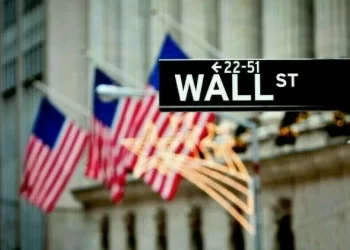SYDNEY: The Australian and New Zealand dollars rebounded on Thursday after a sharp sell-off as investors await stimulus news from China following Republican Donald Trump’s US election victory.
The Federal Reserve is set to announce the outcome of its latest policy review later in the day.
With a quarter-point rate cut almost fully priced into markets, the focus will be on the central bank’s assessment of Trump policies, which are seen pointing to a shallower trajectory of rate cuts and stalling, or reversing, the slowdown in inflation.
The Aussie bounced 0.7% to $0.6617, having plunged 1% overnight to as low as $0.6513.
It managed to claw back some ground at a key level of $0.6534 but upside resistance is heavy at its 200-day moving average of $0.6628.
The kiwi dollar also rose 0.6% to $0.5975, after dropping 1.1% overnight to as low as $0.5912. It also rose back above a key support level of $0.5940.
Chinese data showed on Thursday that exports rose 12.7% in October, well above expectations of 5.2%.
Imports, however, contracted 2.3%, a sharper than expected rate, underlining the need for more stimulus from Beijing to boost domestic demand.
Carol Kong, a currency strategist at the Commonwealth Bank of Australia, said the recovery in the Australian dollar – despite the prospects of a stronger US dollar – could reflect expectations China will announce a strong stimulus plan at the end of a high-level meeting on Friday.
“A second Trump presidency raises the risk that the Chinese authorities announce a larger fiscal stimulus package focused on domestic spending… More spending on the property market and infrastructure can help AUD/USD recover further through higher metals prices.” Central banks Down Under are gauging the potential impact of a Trump presidency.
Australia, NZ dollars tumble as markets lean into Trump bets on election
The Reserve Bank of Australia Governor Michele Bullock said it was hard to judge the inflation implications for Australia.
One uncertainty is China’s response and the net effect may be not so much for the Australian economy, the RBA said.
The Australian dollar on a trade weighted basis, for example, held at 61.5, little changed from a day earlier.
As of now, swaps imply the first cut in Australian policy rates is not fully priced in until July next year, lagging other major economies.
Reserve Bank of New Zealand Deputy Governor Christian Hawkesby also said global central banks would be able to manage the likely inflationary policies from Trump.








